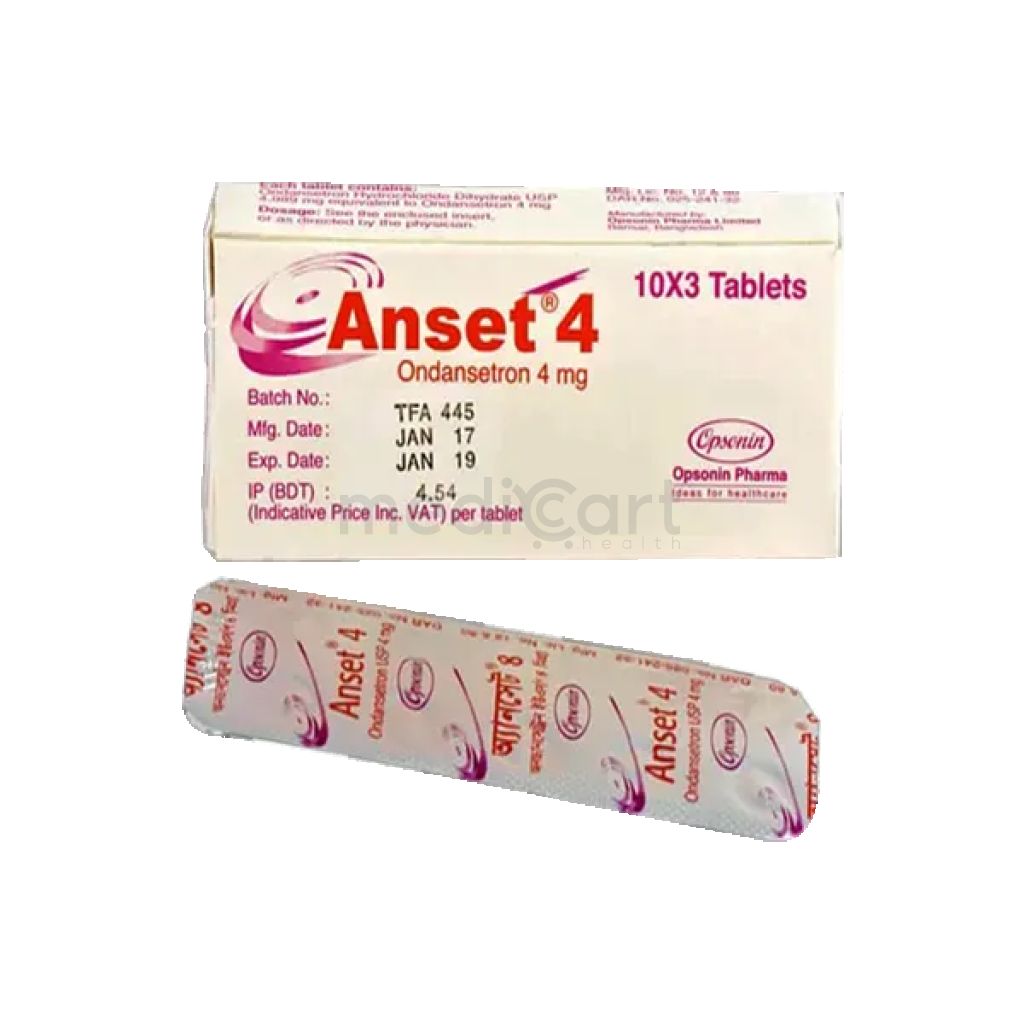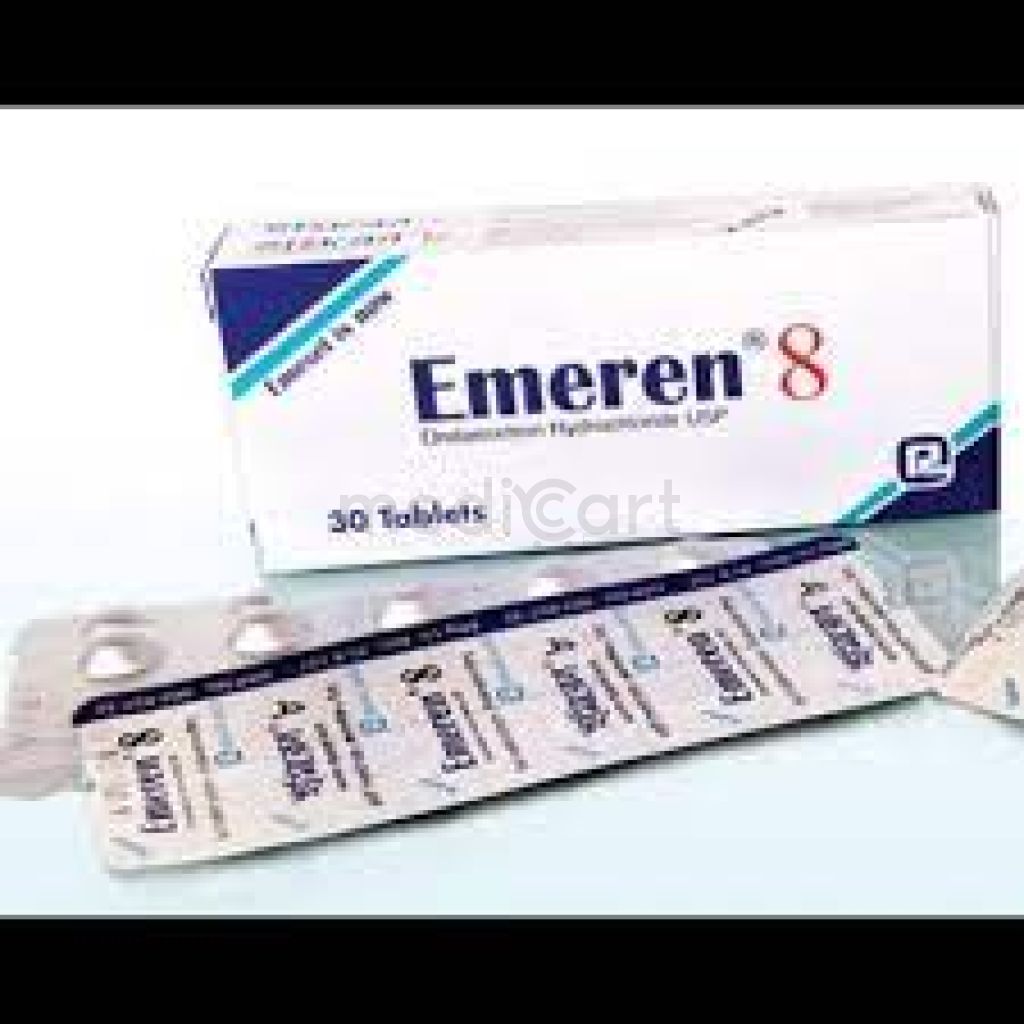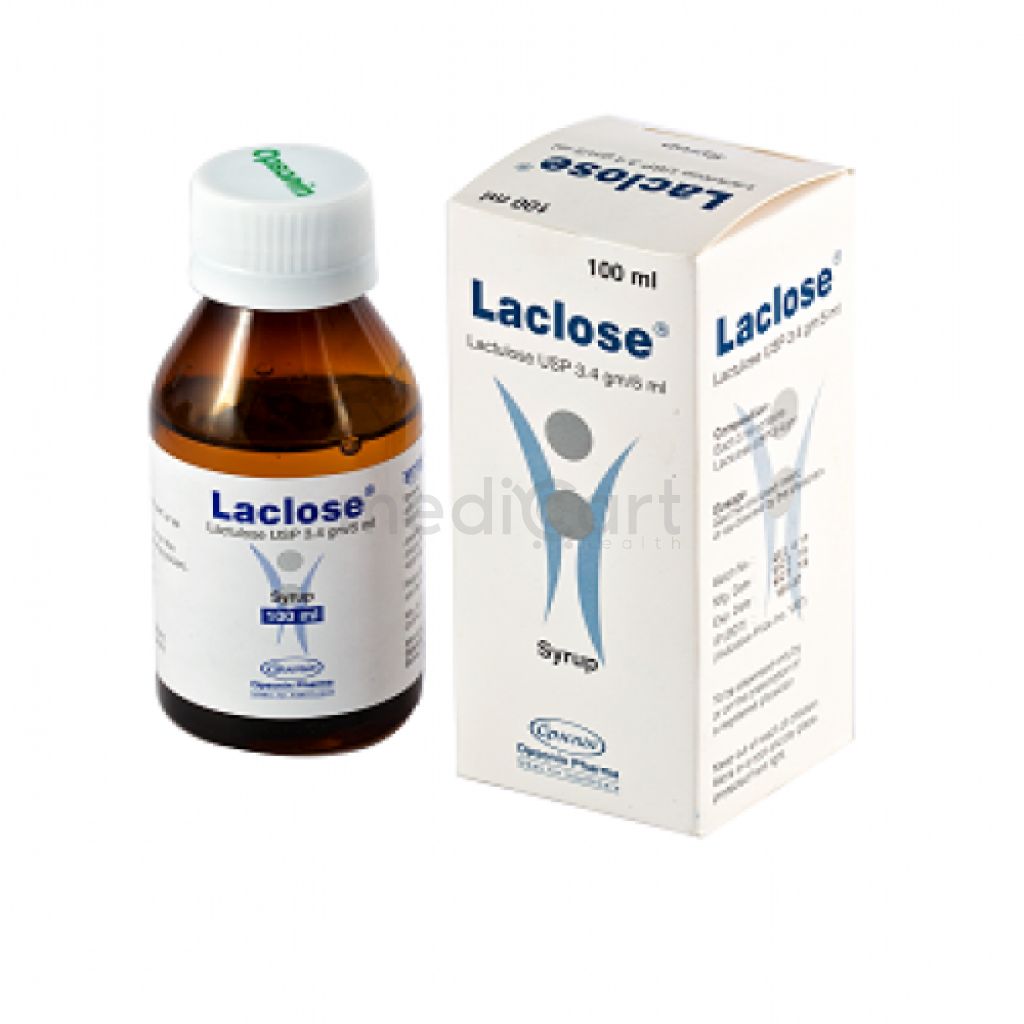

Onaxen - 4 mg
Oral Solution
Pack Size :
1 Bottle x 1 Packet
Generics :
Ondansetron
Manufacturer :
Everest Pharmaceuticals Ltd.
Best Price *
TK
45.00
* Delivery will be done in Dhaka city only.
More Information About - Onaxen - 4 mg
Description
Generic Name
OndansetronPrecaution
May mask progressive ileus and/or gastric distension. Severe hepatic impairment. Pregnancy and lactation. Monitoring Parameters ECG monitoring of patients w/ electrolytes abnormalities e.g. hypomagnesaemia or hypokalaemia, CHF or bradyarrhythmias and on medication that can prolong QT interval.Indication
Prevention of nausea-vomiting associated with chemotherapy, Prevention of nausea & vomiting associated with radiotherapy, Prevention of post-operative nausea & vomiting, Nausea-vomiting in gastroenteritis, Nausea vomiting in pregnancyContra Indication
Use with apomorphine (profound hypotension).Dose
N/ASide Effect
>10% Headache (9-27%),Malaise/fatigue (9-13%),Constipation (6-11%) 1-10% Hypoxia (9%),Drowsiness (8%),Diarrhea (2-7%),Dizziness (7%),Fever (2-8%),Gynecologic disorder (7%),Anxiety (6%),Urinary retention (5%),Pruritus (2-5%),Injection-site pain (4%),Paresthesia (2%),Cold sensation (2%),Elevated liver function test results (1-5%) <1% Cardiac: Arrhythmias (including ventricular and supraventricular tachycardia, premature ventricular contractions, and atrial fibrillation), bradycardia, electrocardiographic alterations (including second-degree heart block, QT/QTc interval prolongation, and ST segment depression), palpitations, and syncope; rarely and predominantly with intravenous ondansetron, transient ECG changes including QT/QTc interval prolongation have been reported Gastrointestinal: Nausea and vomiting Anaphylaxis ECG alterations: Arrhythmias; prolongation of PR, QRS, and QT intervals Hepatobiliary: Specific hepatic enzyme abnormalities, hepatic necrosis, and abnormal hepatic function General: Flushing, rare cases of hypersensitivity reactions, sometimes severe (eg, anaphylactic reactions, angioedema, bronchospasm, cardiopulmonary arrest, hypotension, laryngeal edema, laryngospasm, shock, shortness of breath, stridor) Local reactions: Pain, redness, and burning at injection site Lower respiratory: Hiccups Neurological: Oculogyric crisis, appearing alone, as well as with other dystonic reactions; transient dizziness during or shortly after intravenous infusion Skin and subcutaneous tissue: Urticaria, Stevens-Johnson syndrome, and toxic epidermal necrolysis Eye Disorders: Transient blindness (predominantly during IV administration) reported to resolve within a few minutes up to 48 hr; transient blurred vision Musculoskeletal and connective tissue: ArthralgiaPregnancy Category
Name : B
Description
Animal reproduction studies have failed to demonstrate a risk to the fetus and there are no adequate and well-controlled studies in pregnant women OR Animal studies have shown an adverse effect, but adequate and well-controlled studies in pregnant women have failed to demonstrate a risk to the fetus in any trimester.Mode of Action
Ondansetron antagonises selective 5-HT3-receptor, blocking serotonin, both peripherally on vagal nerve terminals and centrally in the chemoreceptor trigger zone. This action of ondansetron gives it its antiemetic property to prevent emesis due to acute chemotherapy mediated by serotonin.Interaction
May reduce analgesic effect of tramadol. Rifampicin and other CYP3A4 inducers may reduce levels/effects of ondansetron. Concomitant use of QT-prolonging agents (e.g. antiarrhythmics) may cause additive prolongation of QT interval. May increase the risk of arrhythmias w/ cardiotoxic drugs (e.g. anthracyclines). Potentially Fatal: May increase the hypotensive effect of apomorphine.Pregnancy Category Note
N/AAdult Dose
Oral Adult: Prevention of nausea & vomiting associated with chemotherapy: Highly emetogenic chemotherapy: 24 mg once 30 minutes before start of single-day chemotherapy. Moderately emetogenic chemotherapy: 8 mg (one 8 mg tablet) administered 30 minutes before start of emetogenic chemotherapy. A further 8 mg dose should be administered after 8 hours of the first dose. One 8 mg tablet should be administered twice a day (every 12 hours) for 1-2 days after completion of chemotherapy. Prevention of nausea & vomiting associated with radiotherapy: Total body irradiation: 8 mg 1-2 hours before each fraction of radiotherapy administered each day. Single high-dose fraction radiotherapy to abdomen: 8 mg 1-2 hours before radiotherapy, then 8 mg every 8 hours after 1st dose for 1-2 days after radiation completed. Daily fractionated radiotherapy to abdomen: 8 mg 1-2 hours before radiotherapy, then 8 mg every 8 hours after 1st dose for each day of radiotherapy. Prevention of post-operative nausea & vomiting: 16 mg 1 hour before induction of anesthesia. Nausea-vomiting in gastroenteritis Adult: 8 mg three times daily. Nausea vomiting in pregnancy 8 mg 2-3 times daily Parenteral Prevention of nausea-vomiting associated with chemotherapy 0.15 mg/kg IV over 15 min administered 30 min before chemotherapy, then 4 and 8 hr after first dose; not to exceed 16 mg Prevention of post-operative nausea-vomiting 4 mg IV/IM immediately before anesthesia or after procedure. The rate of administration should not be less than 30 seconds, preferably over 2 to 5 minutes. Rectal Nausea and vomiting associated with cancer chemotherapy Adult: As suppository: 16 mg given 1-2 hr prior to treatment. Elderly: No dosage adjustment needed. Severe hepatic impairment (Child-Pugh score ?10): Not to exceed 8 mg/dayChild Dose
Oral Moderate emetogenic cancer chemotherapy: Child (4-11 years): 4 mg tablet should be taken 30 minutes before the start of chemotherapy. The other 2 doses should be taken 4 and 8 hours after the first dose. Then 4 mg tablet should be administered 3 times a day (every 8 hours) for 1-2 days after completion of chemotherapy. Prevention of nausea & vomiting associated with radiotherapy: Child >12 years Total body irradiation: 8 mg 1-2 hours before each fraction of radiotherapy administered each day. Single high-dose fraction radiotherapy to abdomen: 8 mg 1-2 hours before radiotherapy, then 8 mg every 8 hours after 1st dose for 1-2 days after radiation completed. Daily fractionated radiotherapy to abdomen: 8 mg 1-2 hours before radiotherapy, then 8 mg every 8 hours after 1st dose for each day of radiotherapy. Nausea-vomiting in gastroenteritis Children (>1 month): 0.15 mg/kg body weight three times daily. Prevention of post-operative nausea-vomiting Child >12 years: 16 mg 1 hour before induction of anesthesia. Parenteral Prevention of nausea-vomiting associated with chemotherapy Child>6 months: 0.15 mg/kg IV over 15 min administered 30 min before chemotherapy, then repeated 4 and 8 hr after first dose; not to exceed 16 mg/dose Prevention of post-operative nausea-vomiting Child: 1 month-12 yrs (<40 kg): 0.1 mg/kg; 40 kg: 4 mg. Give IV as single dose immediately before induction of anesthesia; or shortly post-op if nausea or vomiting occurs. The rate of administration should not be less than 30 seconds, preferably over 2 to 5 minutes.Renal Dose
Renal impairment: Dose adjustment not necessaryAdministration
May be taken with or without food. Reconstitution: Prior to IV infusion, dilute in 50 mL dextrose 5% inj or normal saline.Disclaimer
The information provided herein are for informational purposes only and not intended to be a substitute for professional medical advice, diagnosis, or treatment. Please note that this information should not be treated as a replacement for physical medical consultation or advice. Great effort has been placed to provide accurate and comprehensive data. However, Medicart along with its authors and editors make no representations or warranties and specifically disclaim all liability for any medical information provided on the site. The absence of any information and/or warning to any drug shall not be considered and assumed as an implied assurance of the Company.









